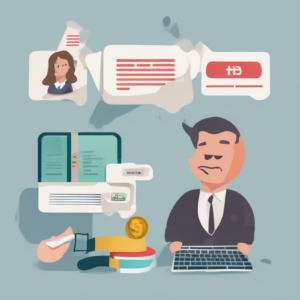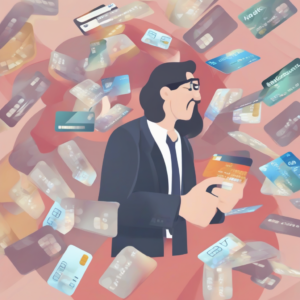Conquer Your Debt: A Comprehensive Guide to Debt Payoff Strategies
Debt can feel overwhelming, but it’s a challenge you can overcome with the right plan and unwavering commitment. This comprehensive guide explores various debt payoff strategies, helping you choose the best approach for your unique financial situation and paving the way to a debt-free future.
Understanding Your Debt
Before diving into strategies, it’s crucial to understand the landscape of your debt. This involves:
- Listing all debts: Include credit cards, loans (personal, student, auto, mortgage), medical bills, and any other outstanding balances. Note the creditor, balance, interest rate (APR), and minimum payment.
- Calculating total debt: Sum up all your outstanding balances to get a clear picture of your overall debt burden.
- Analyzing interest rates: High-interest debt, like credit card debt, typically requires prioritized attention due to its rapid accumulation of interest charges.
- Assessing your income and expenses: Create a budget to identify areas where you can cut back and free up funds for debt repayment.
Popular Debt Payoff Strategies
Several effective strategies can accelerate your debt payoff journey. The best approach depends on your individual circumstances and risk tolerance.
1. The Debt Snowball Method
This method prioritizes psychological momentum. You tackle your smallest debt first, regardless of its interest rate. Once that debt is paid off, you roll the payment amount into the next smallest debt, creating a snowball effect.
- Pros: Provides early wins and boosts motivation. Easy to understand and implement.
- Cons: May not be the most financially efficient method, as it doesn’t prioritize high-interest debts.
2. The Debt Avalanche Method
This strategy prioritizes financial efficiency. You focus on paying off the debt with the highest interest rate first, regardless of the balance. This minimizes the total interest paid over time.
- Pros: Saves money on interest in the long run. Mathematically the most efficient approach.
- Cons: Can be demotivating initially, as the payoff process for larger debts may take longer.
3. The Debt Consolidation Method
This involves combining multiple debts into a single loan with a lower interest rate. This simplifies payments and potentially lowers monthly expenses.
- Pros: Simplifies payment management. Potentially lower interest rates.
- Cons: Requires good credit to qualify for a lower interest rate. May extend the repayment period, leading to more interest paid overall if the interest rate isn’t significantly lower.
4. The Balance Transfer Method
Similar to consolidation, this involves transferring high-interest credit card balances to a card with a lower introductory APR. It’s a short-term strategy to reduce interest payments during the introductory period.
- Pros: Temporarily reduces interest payments.
- Cons: Introductory rates are temporary. Requires careful monitoring to ensure the balance is paid off before the introductory period ends. Potential for high fees if not managed properly.
Beyond the Strategies: Essential Steps for Success
Regardless of the chosen strategy, these steps are crucial for successful debt payoff:
- Create a Realistic Budget: Track your income and expenses meticulously. Identify areas for savings and allocate funds specifically for debt repayment.
- Increase Your Income: Explore opportunities to increase your income through a side hustle, freelance work, or a higher-paying job.
- Negotiate with Creditors: Contact your creditors to discuss potential options, such as lower interest rates or payment plans. Be prepared to negotiate.
- Seek Professional Help: Consider consulting a financial advisor or credit counselor for personalized guidance and support.
- Maintain Discipline and Patience: Debt payoff takes time and effort. Stay committed to your plan, even when faced with setbacks.
- Avoid New Debt: Resist the temptation to accumulate new debt while working towards payoff. This ensures progress isn’t undone.
- Celebrate Milestones: Acknowledge and celebrate your progress along the way. This helps maintain motivation and momentum.
- Build an Emergency Fund: Once you have made significant progress towards paying off your debt, build an emergency fund to prevent future debt accumulation due to unexpected expenses.
Understanding the Psychological Aspects of Debt Payoff
Debt payoff isn’t just a financial journey; it’s also a psychological one. Managing the emotional aspects is crucial for long-term success.
- Acknowledge your feelings: Debt can cause stress, anxiety, and shame. Allow yourself to feel these emotions without judgment.
- Set realistic goals: Avoid setting overly ambitious goals that may lead to discouragement. Break down your debt payoff into smaller, manageable steps.
- Practice self-compassion: Be kind to yourself during the process. Setbacks are inevitable; don’t let them derail your progress.
- Seek support: Talk to friends, family, or a therapist about your struggles. Sharing your experience can help alleviate stress and provide encouragement.
- Focus on progress, not perfection: Celebrate your achievements along the way. Progress, not perfection, is the key to success.
Specific Debt Types and Strategies
Different types of debt often require tailored approaches:
- Credit Card Debt: High interest rates make this a priority for many strategies. Balance transfers and debt consolidation can be particularly helpful.
- Student Loan Debt: Federal student loans offer various repayment plans, such as income-driven repayment, which can make payments more manageable. Explore refinancing options if you qualify for a lower interest rate.
- Medical Debt: Negotiate with medical providers or explore options like payment plans or financial assistance programs.
- Personal Loans: Focus on making extra payments whenever possible to accelerate the payoff process.
- Auto Loans: While typically lower interest rates, making extra payments can significantly reduce the total interest paid and shorten the repayment period.
Preventing Future Debt
Once you’ve conquered your debt, focus on building healthy financial habits to prevent it from happening again:
- Track spending: Monitor your expenses regularly to identify areas for potential savings.
- Create a budget and stick to it: A well-defined budget ensures you allocate funds responsibly and avoid overspending.
- Build an emergency fund: Having 3-6 months of living expenses saved can prevent you from taking on new debt to cover unexpected costs.
- Use credit responsibly: Avoid overspending on credit cards and pay your balances in full each month.
- Automate savings: Set up automatic transfers to your savings and investment accounts to make saving effortless.
- Regularly review your credit report: Monitor your credit score and look for any errors or signs of fraud.





